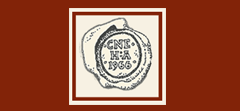Abstract
Textiles represent a very significant component of the Dutch goods that were exported to New Netherland for trade with the Iroquois Indians. These textiles varied greatly in quality. These differences were indicated on lead cloth seals that were affixed to the cloths. The lead cloth seals that are excavated at Iroquois sites provide useful information about the origins and quality of the traded cloth; They also .are a source of information about Dutch textile manufacture in the 17th century, a period during which the cloth industry was the most important urban industry in the Netherlands. Amsterdam was the staple market from , which a,n kinds of textiles from various towns a,:d cities were exported. Amsterdam itselJ was specialized in the dyeing of cloth. A catalogue of the lead cloth seals found at Iroquois and Dutch sites, in New Netherland reveals that. between 1630 and 1670, four Dutch cities were represent~'d: Kampen, Leiden, Haarlem, and Amsterdam. There are both round and tubular seals from Kampen. Leiden seals are prima7;ily round. The Amsterdam seals found in Iroquois sites are all seals that verify the quality of the dyeing of the doth. ' Haarlem is represented by just one seal, found in Albany, suggesting that cloth from Haarlem was used by the Dutch .colonists themselves, rather than for the trade with the Iroquois. The numbers scratcl:zed on cloth " seals indicate cloth lengths. Actual textile fragments excavated at some Iroquois sites represent coarse duffels probably from Kampen as well as finer cloth types probably from Amsterdam. Based on the excavated cloth seals, it can be concluded that most of the cloth fC!r trade with the Iroquois came from Kilmpen.
DOI
10.22191/neha/vol34/iss1/4
Recommended Citation
Baart, Jan M.
(2005)
"Cloth Seals at Iroquois Sites,"
Northeast Historical Archaeology:
Vol.
34
34, Article 4.
https://doi.org/10.22191/neha/vol34/iss1/4
Available at:
https://orb.binghamton.edu/neha/vol34/iss1/4


